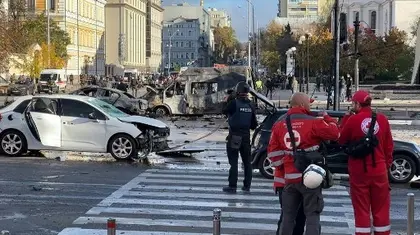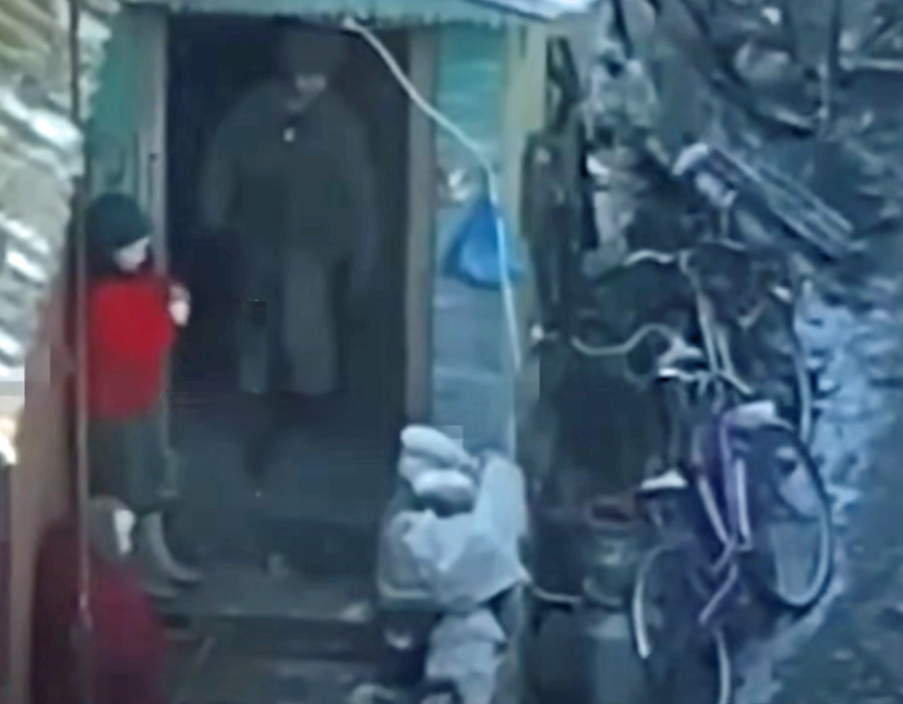Russia’s newly launched campaign to send masses of guided missiles and kamikaze drones against Ukrainian civilian homes, businesses and power grid infrastructure thus far is less than a resounding success and by its third day, Oct. 12, the attacks had effectively stopped.
Air raid sirens sounded repeatedly overnight in the capital of Kyiv and other Ukrainian regions, but according to official reports across the country, by midday Oct. 12, reports of actual, new missile strikes were practically nil.
- View the most recent Ukraine news pieces that came out today.
- Russian Losses in Ukraine
JOIN US ON TELEGRAM
Follow our coverage of the war on the @Kyivpost_official.
The southern city of Zaporizhzhia, for weeks a favorite target for Russian attacks because of its relative proximity to major Russian Federation (RF) combat units and their shorter-range artillery systems, was an exception and was hit again late in the evening Oct. 11.
A seven-weapon salvo of S-300 missiles – an anti-aircraft weapon pressed into service by Russian army leadership for area bombardments – landed at widely separated locations across the city, regional defense commander Oleksandr Starukh told media in a press statement made public shortly after midnight. Two missiles hit the city center and five flew into suburbs. One weapon partially destroyed a residential building and rescuers pulled three people out of the rubble. Two S-300 missiles blasted craters in a farm field, Starukh said.
Across the rest of the country, the top command of the Armed Forces of Ukraine (AFU) said air defense networks on Oct. 12 had seen little sign of the Russian missile campaign continuing. In Dnipro in the early afternoon, the regional defense command reported a single explosion, cause not specified, near a power station in the city’s Kamenska region. Russian artillery attacks continued elsewhere in the country, with officials in the city of Nikopol reporting a heavy bombardment hitting a hospital and killing a six-year-old girl and seriously injuring her mother.

Kyiv Begins Mass Operation to Seal Borders For Draft Evaders
Over Oct. 10 to Oct. 11, according to Ukraine’s Army General Staff (AGS), the Kremlin assault on Ukrainian cities and their residents was orders-of-magnitude more intense, with launches over 48 hours of approximately 120 cruise missiles and 70 kamikaze drones. According to Ukrainian government statements and observations by independent media, including Kyiv Post, the Russians appeared to be targeting power grid infrastructure, in a few cases government buildings, and city streets and squares with high densities of pedestrians and traffic.
More than anything else, the AGS said, the weapons launched in Russia’s new massed missile attack on Ukraine were shot down. According to kill-claim counts published in the AGS daily situation estimate, during the two-day Russian bombardment AFU units reported they destroyed 66 RF cruise missiles, along with 37 smaller, Iran-manufactured, kamikaze drones.
Pro-Russia information platforms claimed that almost all of the weapons got through to hit purely military targets – an allegation contradicted by Kyiv Post and other independent media observing damaged civilian homes and businesses in Kyiv, and by multiple images posted in social media by AFU soldiers of shoot-downs in Kyiv, Mykolaiv, Odesa and Dnipro regions. One gunner made public a video of a pair of RF missiles shot down within seconds of each other by air defenses in Kryvyi Rih.
The Odesa regional defense command, the first-line air defense belt against weapons incoming from RF-controlled Crimea and the Kuban, the Black Sea and Caspian regions, claimed that on Oct. 11 alone Ukrainian gunners destroyed 16 Kh-101 or X-555 high-tech, air-launched missiles and 12 Kalibr ship-launched missiles.
Ukraine’s air defenses included Soviet and NATO-standard weapons – mostly guided anti-aircraft missiles – that have shown themselves to be capable of defending the country’s skies against modern missiles at selected locations but unable to shoot all incoming weapons down. The slow, low-tech Iranian Shahed-136 kamikaze drone is also vulnerable to AFU autocannon and machine guns.
Russian state-controlled media has been quick to play up, and at times grossly exaggerate, damage caused by the attacks as proof of the Kremlin’s allegedly overwhelming military dominance over Ukraine, and evidence that Kyiv and Ukrainians were suffering for continuing to resist Russian invasion.
An Oct. 11 promo for the Russian national television “Mesto Vstrechi” news program featured images of dead bodies, crying women, missile explosions and buildings in rubble published in Ukrainian social media following the Oct. 10 and Oct. 11 bombardment of Ukraine, with the voice over “Tune in and see how the Ukrainian Nazi regime was punished!”
Russian nationalists had long called for a get-tough wartime policy against Ukraine, with many criticizing even President Vladimir Putin himself for failing to unleash Russia’s purported military might against Ukraine’s power grid. Some military observers linked the Kremlin’s Oct. 8 appointment of General Sergei Surovikin, the new commander of Russian forces in Ukraine, as a green light to smash Ukrainian infrastructure without regard to collateral damage. An infantry general with a reputation for ruthlessness , Surovikin is best known for authorizing vicious, and ultimately successful, artillery bombardments and massed infantry attacks on AFU defenses in the city of Severodonetsk.
Russian strikes on Oct. 10 and Oct. 11 killed power across most of the cities of Lviv and Poltava, and smaller sections of Kyiv, Khmelnytskyi, and Sumy. Most outages lasted a few hours and by Oct. 12 practically all services were restored in the worst-hit city, Lviv.
In the capital Kyiv, a five-meter crater blasted into a central city intersection near the Academy of Sciences building killing at least two civilians on Oct. 10, was fully-asphalted, repaired, and open to vehicle and pedestrian traffic the evening of Oct. 11. City officials said rolling, two-hour blackouts might be necessary during high-electricity-use evening hours, as repairs to the grid continued.
Vitaly Kim, head of Mykolaiv’s regional defense administration, said in a video on Oct. 11 that the RF attacks might be intended to terrorize the Ukrainian population or to test Ukrainian air defenses, and that another wave of missiles might be launched; but it is equally possible the main drivers of the Kremlin’s drone/missile strike strategy are frustration and incompetence.
“(T)here are several possible explanations. The first is that the Russians seek to keep us in basements and shelters…The second possibility is that they are testing our anti-aircraft defense. Where our weak spots are that can be hit massively. We understand that, too…And the third reason may be that they are just illogical idiots, which is also a very likely scenario.”
You can also highlight the text and press Ctrl + Enter






